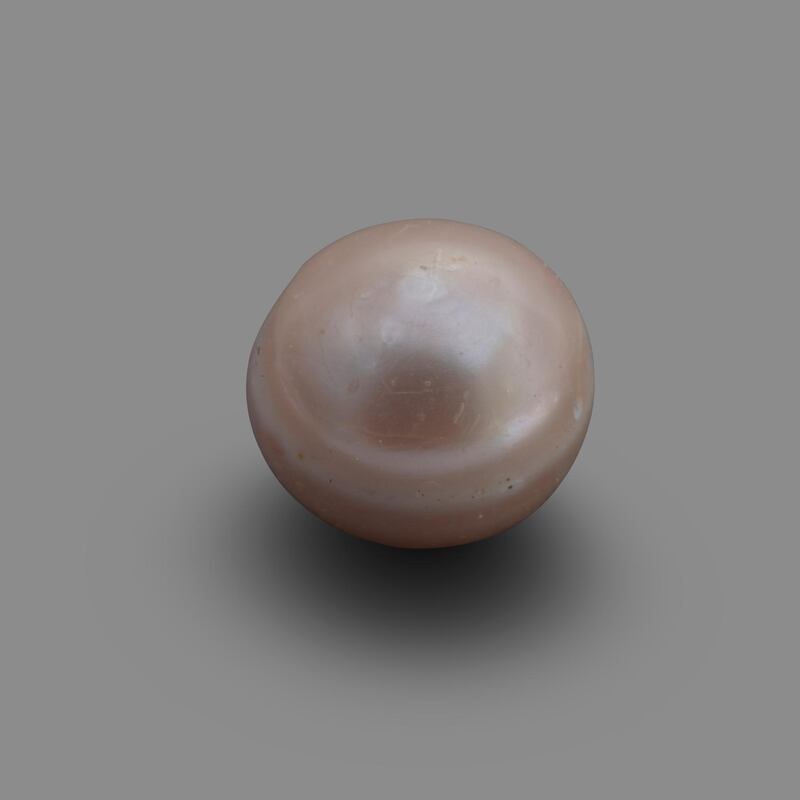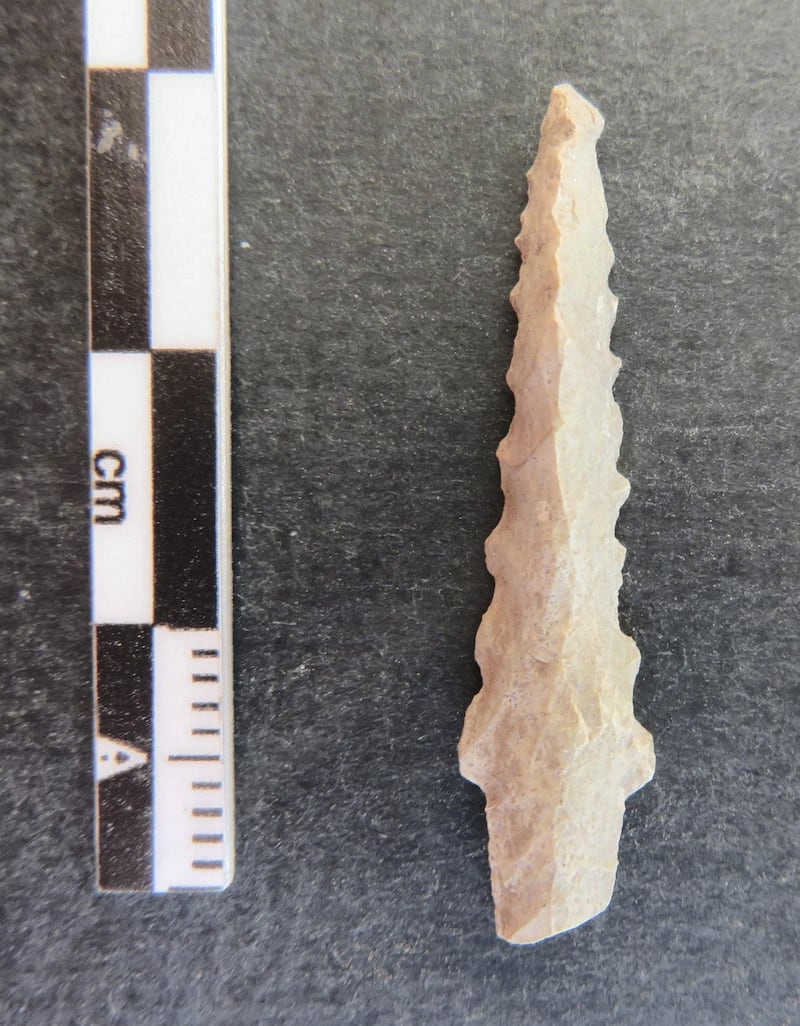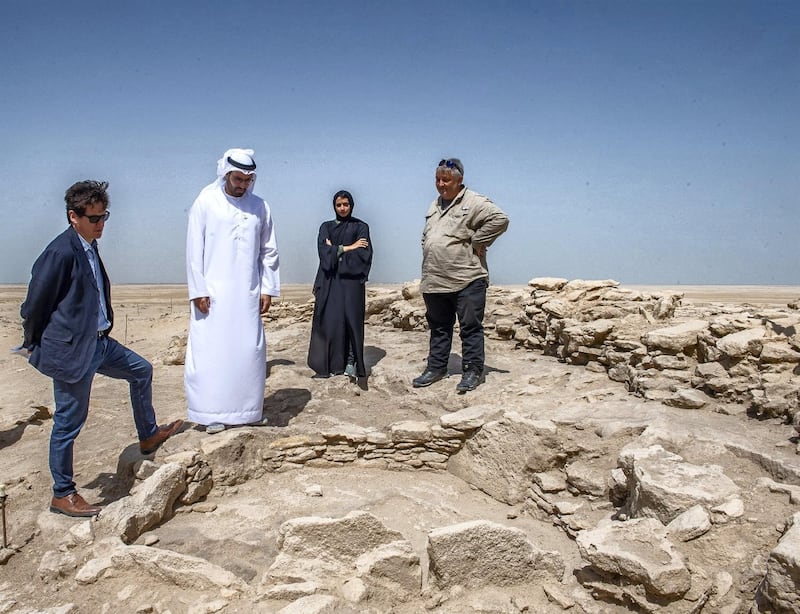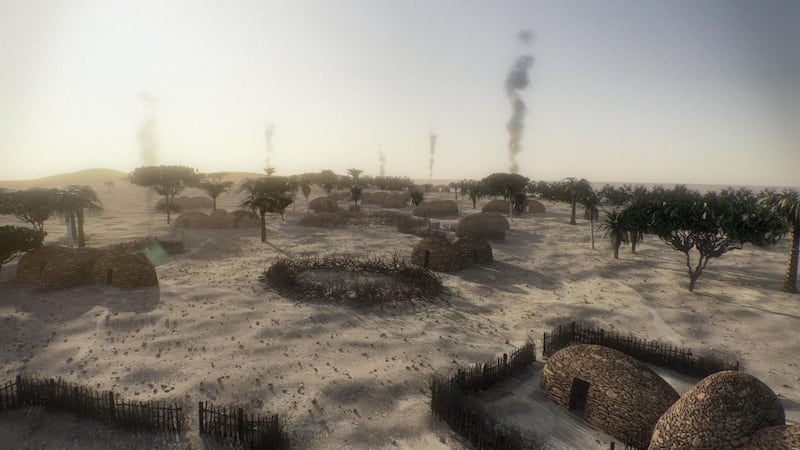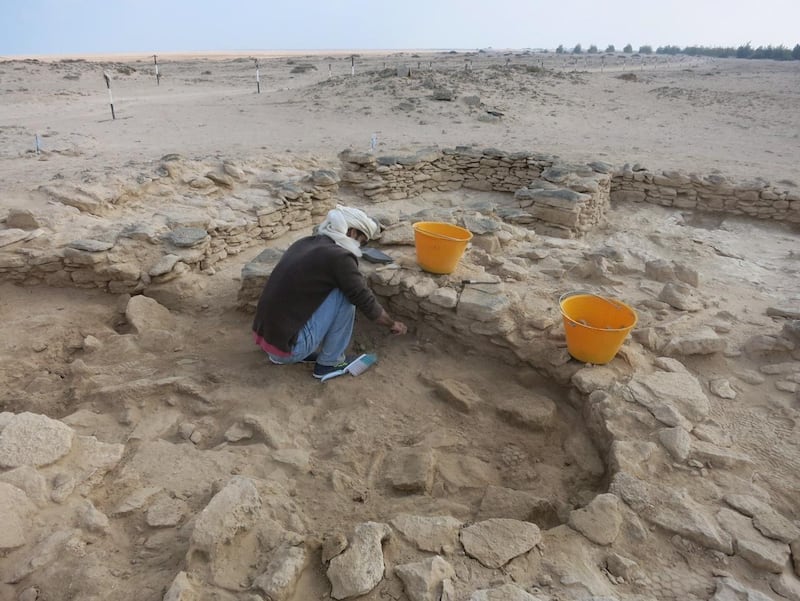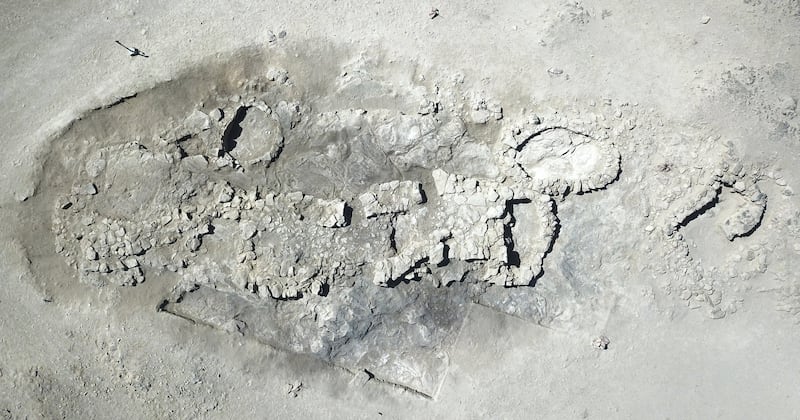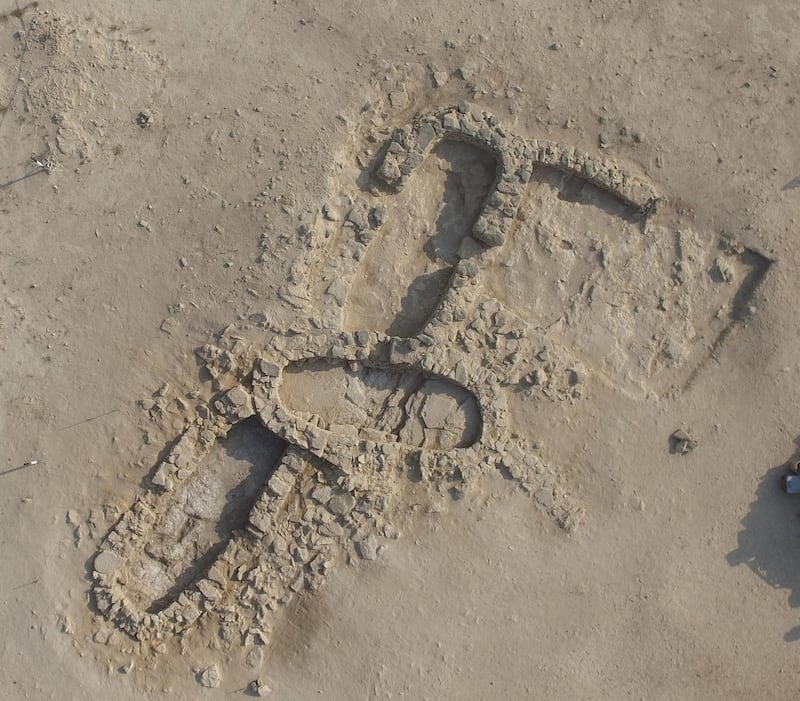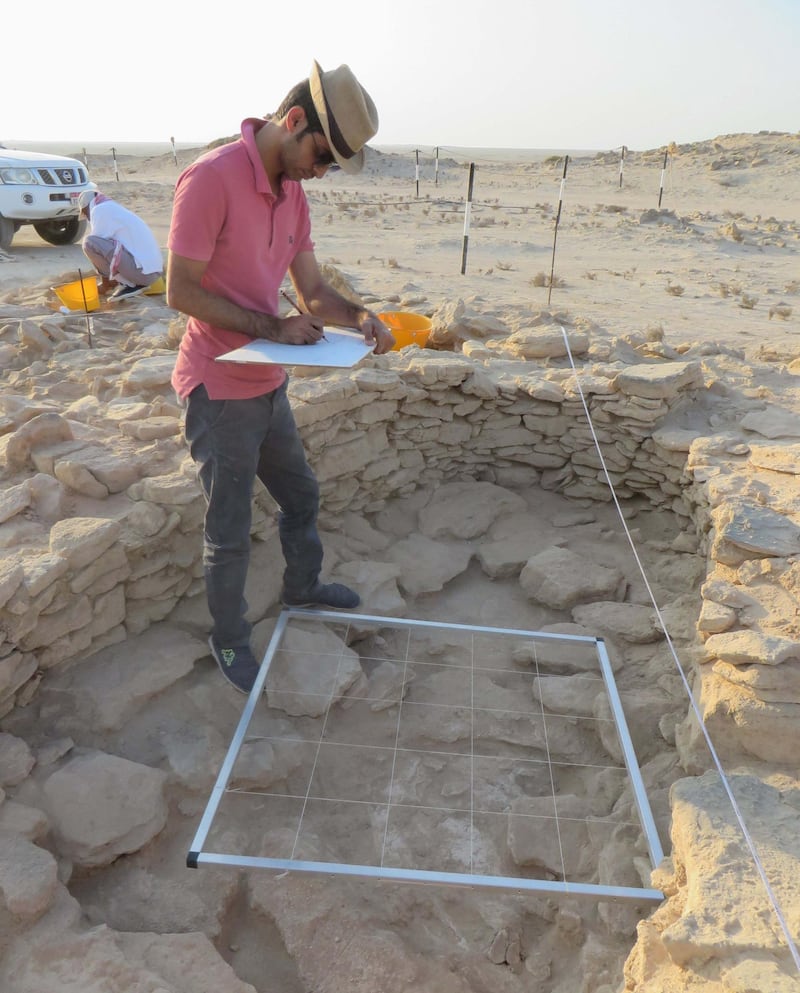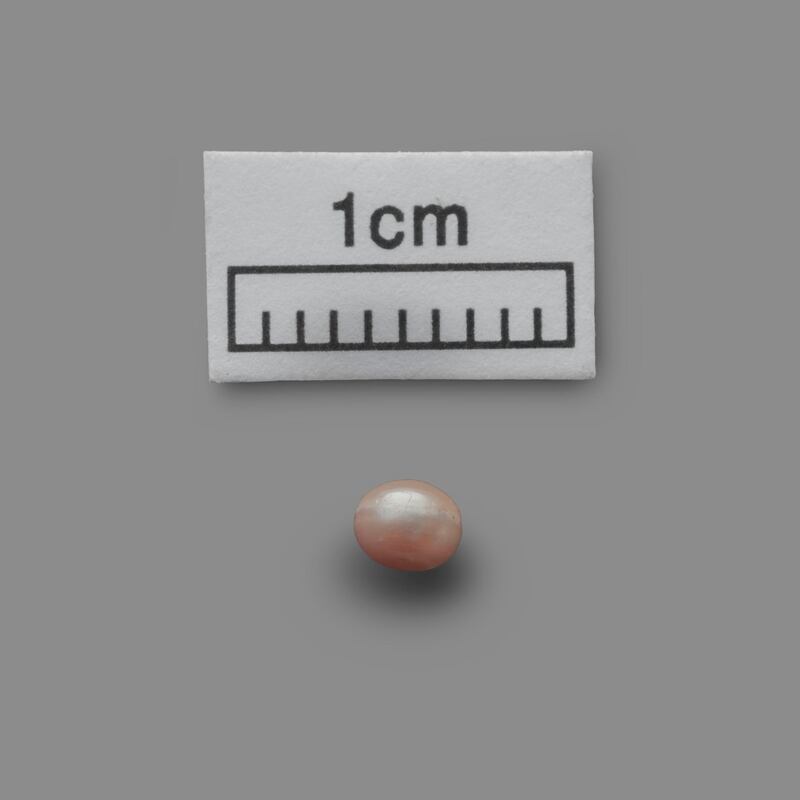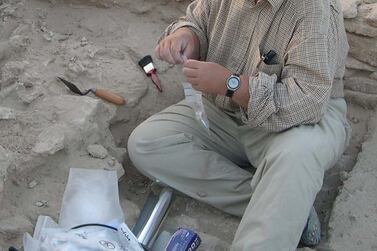Archaeologists have discovered what is believed to be the world's oldest natural pearl, on an island off Abu Dhabi.
The 8,000-year-old gemstone was unearthed on Marawah Island, which lies just off the coast of Mirfa town, about 170 kilometres west of Abu Dhabi city.
Using carbon dating, archaeologists from the Department of Culture and Tourism Abu Dhabi deduced the pearl dates from 5,800 to 5,600BC.
Archaeologists believe the discovery proves pearls were used in the UAE nearly 8,000 years ago and it represents the earliest known evidence for pearling yet discovered anywhere in the world.
It follows a string of discoveries on Marawah over the past few years that revealed evidence of a sophisticated Stone Age village that once thrived on the island.
The people that lived there were no simple Neolithic nomads but knew how to navigate, herd sheep, fish, make jewellery and even create decorative art.
The pearl will now go on display at Louvre Abu Dhabi as part of the '10,000 Years of Luxury' exhibition that opens on October 30. It will eventually be housed at Zayed National Museum, which is being built on Saadiyat Island.
"The Abu Dhabi pearl is a stunning find, testimony to the ancient origins of our engagement with the sea," said Mohamed Al Mubarak, chairman of DCT.
"The discovery of the oldest pearl in the world in Abu Dhabi makes it clear that so much of our recent economic and cultural history has deep roots that stretch back to the dawn of prehistory.
"Marawah Island is one of our most valuable archaeological sites and excavations continue in the hope of discovering even more evidence of how our ancestors lived, worked and thrived.”
Before this discovery, the earliest-known pearl in the UAE was uncovered at a Neolithic site in Umm Al Quwain and was believed to be 7,500 years old. Ancient pearls from the same time have also been found at a Neolithic cemetery close to Jebel Buhais in Sharjah. Carbon dating indicates that the Abu Dhabi pearl is older than both these.
Excavations on the island usually take place in spring and last up to two months. The pearl was found during last year's season on the floor of one of the rooms of the village and carbon dating finished a few months later.
"We didn’t expect to find it," said Emirati archaeologist Abdulla Al Kaabi, 34, who was part of the team. "We knew it was a pearl but we didn’t know the date. We were so excited when we heard the results and we felt something we cannot really describe."
Experts have suggested that ancient pearls were possibly traded with Mesopotamia (ancient Iraq) in exchange for ceramics. Pearls were also possibly worn as jewellery.
Evidence for ancient settlements on Marawah was first discovered in 1992. But digs undertaken by DCT over the past few years have shown how a vibrant and sophisticated settlement thrived there about 8,000 years ago. Significant finds have included a ceramic vase, flint arrowheads and shell beads. Painted plaster vessel fragments were also discovered and represent the earliest known decorative art yet discovered in the UAE.
Archaeological work on Marawah is detailed and painstaking. About 10 archaeologists live and work on the island for the duration of the season and every find must be catalogued. Mr Al Kaabi said it was not an easy job but a find like the Abu Dhabi pearl makes it all worthwhile.
"It is a small site so you must look carefully. You have to be precise," he said. "Sometimes it gets very hot but when you find something like the pearl you forget all that."
The work on Marawah is part of a broader strategy by DCT to look at the bigger picture across the Gulf region.
Its work is challenging perceptions about the people who lived here and shows how these early inhabitants thrived in a harsh landscape.
"Marawah is a fundamental site," said Mr Al Kaabi. "It is a big chance to find something new and build up the history of the country."
A major new dig on Marawah Island is planned for 2020.
